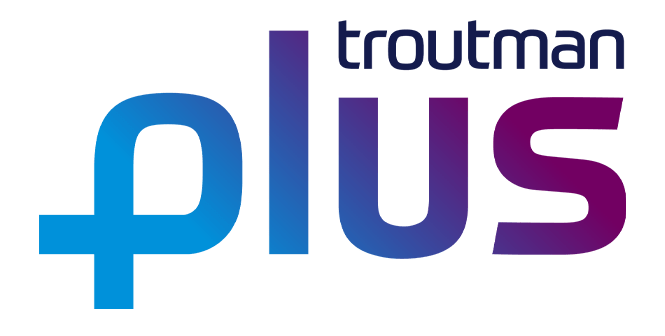Direct feedback from your client is the best way to understand what your client values and needs. And acting on that feedback is the clearest way to improve relationships and inform client development strategies. I have spoken with too many attorneys who think they are providing something the client values, only to hear a different message through client feedback.
So how do you seek honest and open client feedback? At Troutman Pepper, we use several feedback methods — from low-touch electronic surveys to high-touch one-on-one interviews — and our client listening program has grown to include various other methods for collecting more specific feedback. Increasingly, we are also seeing clients proactively provide feedback to their law firms, either directly or via the legal operations function. Feedback channels are becoming more sophisticated, and law firms that embrace this and purposefully seek feedback from clients will be seen favorably.
Below are some examples of different types of feedback, along with tips on how and when to use them.
Electronic Feedback Surveys
We most often see firms sending electronic feedback surveys to large groups of clients on an annual or semi-annual basis. These types of surveys are low-touch, high-value because they provide broad insights from a number of clients and high-level trends on which you can focus your efforts to improve relationships.
But you don’t need to wait until the next firmwide annual survey to quickly take the pulse of clients. Consider sending brief electronic feedback surveys whenever you want to check in on the relationship or to debrief on a recent matter. Pulse surveys — where you ask clients in a specific industry or area about a discrete issue — can also be helpful when trying to better understand what issues a client is facing or how the client will be impacted by a recent development.
One-on-One Feedback Interviews
Individual client interviews are a more targeted feedback method and can be implemented for a number of reasons. Individual interviews are less rigid in format than electronic surveys and allow the interviewer to dig deep into the client’s priorities and needs. As the interview is not about generating sales, the client may feel more open to providing insights into strategies or challenges, and the conversations almost always uncover opportunities that the client team can use to deepen the relationship.
When choosing clients for an interview, think beyond just those generating the most revenue. Consider clients with the most cross-practice need, those you feel have longer-term revenue-generating potential, or those who are facing change within the relationship or organization – management changes, retirements, acquisitions, business expansion, etc. And make sure your interviews are conducted by a third party who isn’t working with the client day to day. Clients often feel more open to providing insights into strategies or challenges when speaking with an objective party who will not take the feedback personally.
Year-End / Annual Check-Ins
Like one-on-one interviews, consider reaching out to clients for an in-depth discussion on an annual basis. These interviews can be conducted at the beginning or end of a year, or could be timed to coincide with a client’s annual budgeting or performance management process.
When conducting an annual check-in, you should ask about:
- How your firm can help the client meet performance management metrics
- How best to work with legal operations
- Financial measurements the client is tracking for outside counsel
- Emerging areas of importance the client might be facing in the upcoming year
- Strategic priorities, and whether these have changed since the last time you asked
- How your client finds working with your team and things they specifically like or do not like about that interaction, etc.
End-of-Matter Check-Ins
End-of-matter check-ins are great for evaluating how both your client and your firm feel about a specific matter, the outcome, the process, the team, and more. When a significant matter concludes, consider asking clients to provide feedback via an electronic survey or an individual interview. Include a mix of set questions (e.g., Did we meet budget expectations?) and open-ended questions (e.g., What could we have done better?) to gain the most insight.
We recently conducted an end-of-matter survey in which the client was candid about areas for improvement and key areas of interest. Had we not asked, we would not have known about these issues of importance and would not have been able to build them into our ongoing client development strategy.
Outside Counsel Scorecards
As clients are asked to do more with less, scorecards are emerging as a way to evaluate outside counsel. In our experience, we have seen scorecards evaluating firms purely on financial metrics, and we have seen scorecards providing additional detail on team performance and overall experience working with the firm.
While you won’t be able to decide whether you are evaluated via a scorecard, you can choose to be active in the process. If clients offer to meet to discuss the scorecard, you should take advantage of it. If clients don’t offer a meeting, ask for one.
Use the scorecard as an opportunity to make improvements in the client relationship and provide additional value based on the feedback. As one example, we began creating client-specific thought leadership after a scorecard we received mentioned a need for additional industry insights.
RFP Post-Mortems
It’s rare to win every RFP you submit, but finding out why you lost an RFP is a valuable exercise. Understanding why you were not selected can provide important intel for future responses.
When you hear you have lost an RFP, consider having the relationship partner or a neutral third party call the client to ask for feedback on the RFP. Be sure to ask questions about how the hiring decision was made, who had decision-making power, and what the winning firm did successfully. Asking for this feedback shows the client you are interested in growing the relationship and can result in additional work outside the scope of the RFP.
Diversity, Equity, and Inclusion Metrics
Clients are increasingly telling us that diversity, equity, and inclusion are top of mind, and that they are looking closely at firms’ efforts to support diverse individuals and teams. We’re seeing more and more clients asking for DEI metrics and engaging with us on DEI topics in feedback interviews. When clients ask for DEI info, use it as an opportunity to learn more about their priorities and how you can partner with them on DEI initiatives.
For example, in a recent client interview, we learned that DEI is personally important to one of our client contacts. She indicated her willingness to help support a new attorney rising in the ranks if they are diverse. We made sure we followed up on that comment with additional feedback conversations centered on DEI, looping in our internal DEI team to discuss opportunities for collaboration related to DEI. Since those conversations, the client has continued to refer new matters to us.
Feedback comes in all shapes and forms and can be administered in general or customized ways. Who you will seek feedback from, and the format of that ask, will be determined by how you intend to use the feedback. Ultimately, all feedback — positive, neutral, or negative — is valuable. If you are open to acting on what you hear, you can learn a lot about your client.
Meet Patricia Ellard
With a background in competitive intelligence and strategic thinking, Patricia brings more than 20 years of experience in global management consulting and law firms to her role as director of client care analytics & service design. A highly inquisitive person with a passion for exploring, Patricia uses competitive intelligence sources and tactics combined with real-time client feedback to work with Troutman Pepper’s Client Care and Innovation offices to develop tailored solutions for clients’ problems. Working collaboratively with lawyers and clients, Patricia helps establish the foundation for successful client service.




